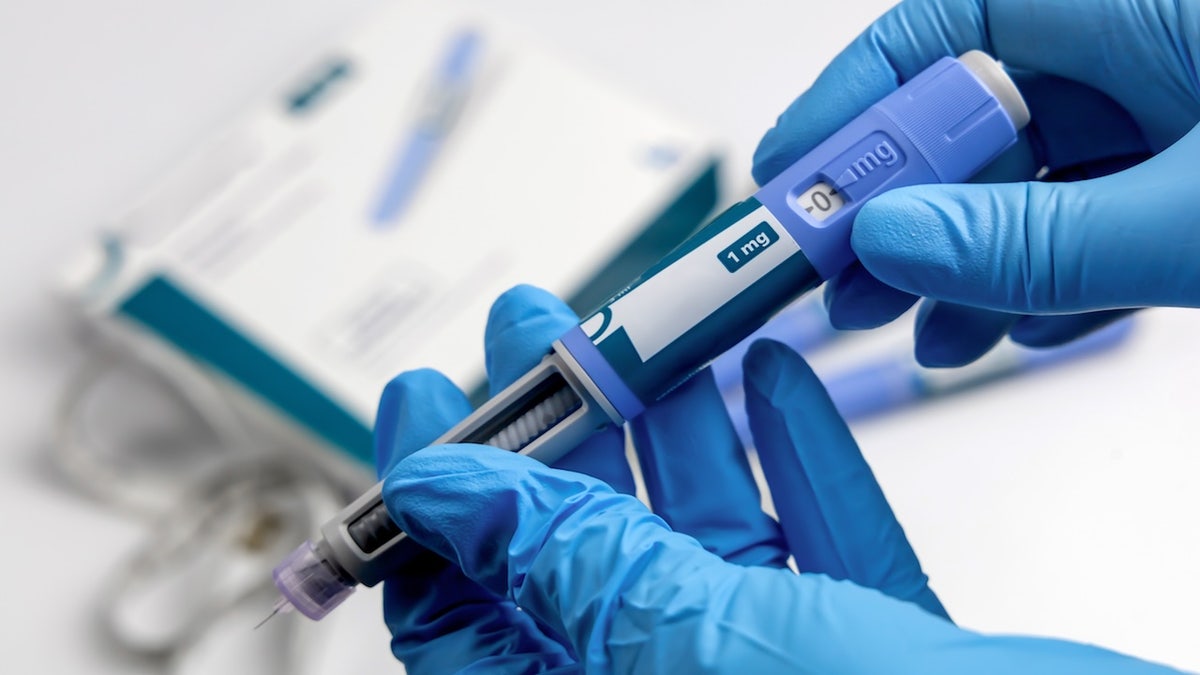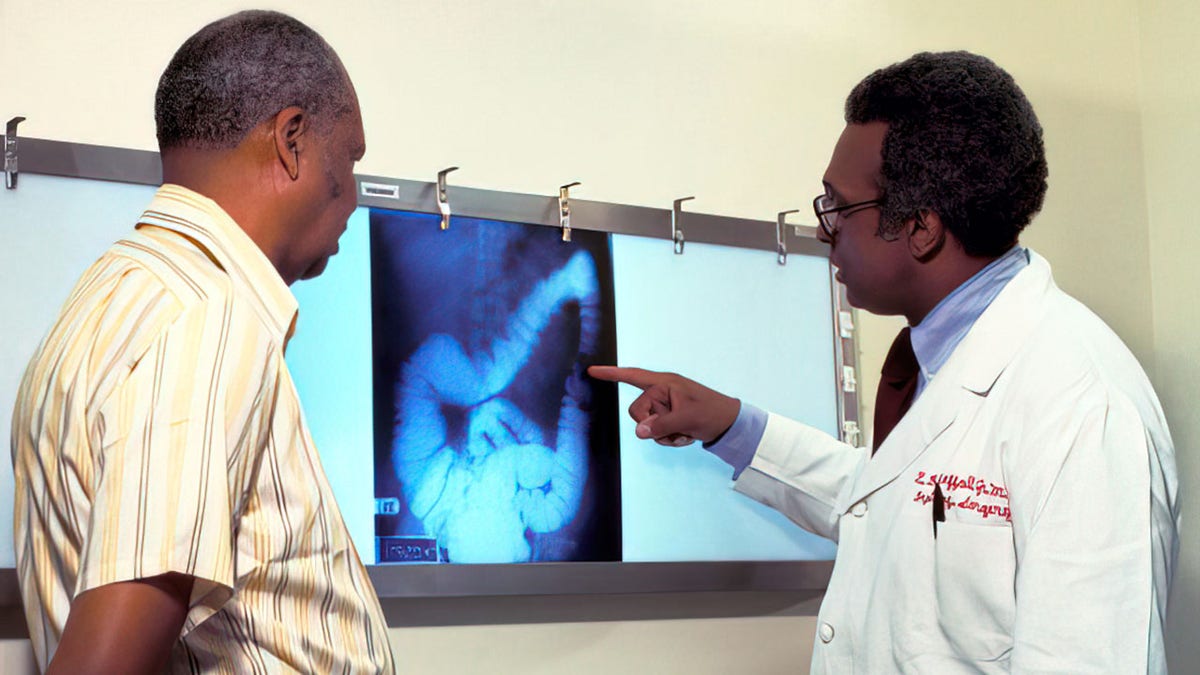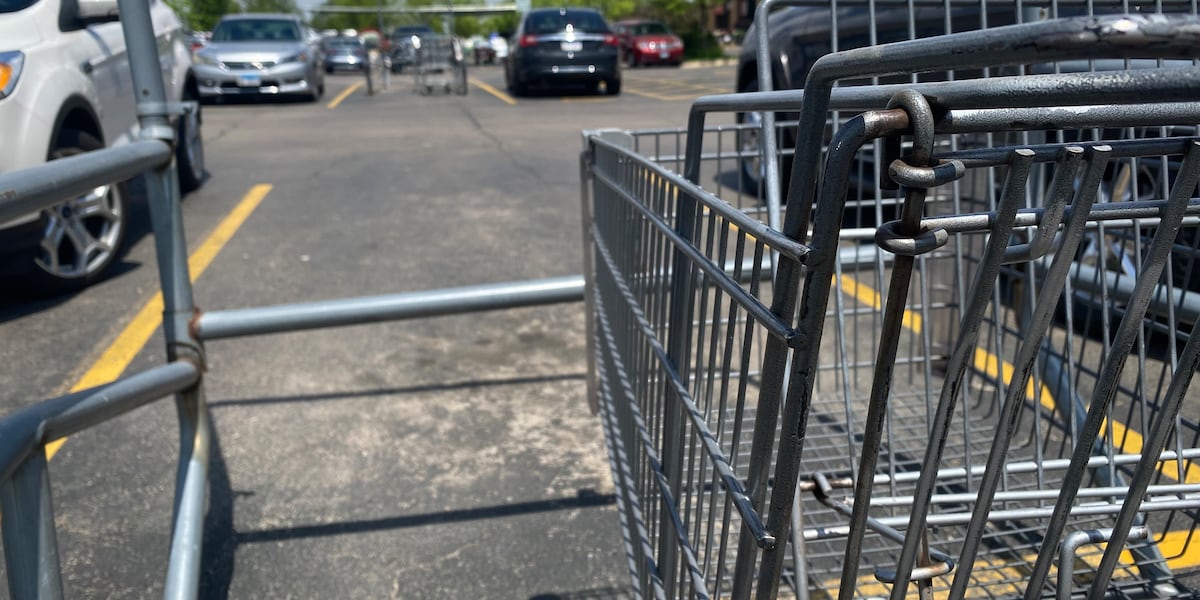Health
The Strange Sign From Your Toilet That You May Have Diabetes

Does it seem as though the mold in your toilet bowl keeps coming back more quickly after cleaning? And that there’s more of it? Although this nuisance means more scrubbing the toilet bowl (more on the best pro cleaning tricks below), there’s a chance it’s also a clue you should get your blood sugar checked. As strange as it sounds, frequently seeing mold in your toilet could be one of the first signs of diabetes.
Although it may seem like a leap — mold in the toilet bowl and diabetes — it makes sense when you consider that the composition of your urine reveals a lot about your health and that different kinds of bacteria and fungus feed on different kinds of compounds.
The connection between diabetes and urine composition
“Your kidneys filter glucose from the bloodstream and excrete it from the body via urine,” explains Laura Purdy, MD. “If you have a high level of sugar in your blood, it’s going to come out in your urine. Which is why higher glucose in urine can be one sign of diabetes.”
Consider that the name of the disease: diabetes mellitus It’s derived from the Greek word diabetes (siphon) and the Latin word mellitus (sweet). Research shows the term has been used since as far back as 300 BC. Even ancient Greek, Indian and Egyptian civilizations took note of folks whose urine had a sweet smell.
What’s more, folks with unchecked diabetes are often thirsty. This means they drink more, and in turn, urinate more.
The connection between urine composition and toilet mold
Mold and fungi feed on sugar. If your body is flushing excess glucose, higher levels of sugar are making their way into your toilet. And, if you flush infrequently due to trying to conserve water, that sugar stays in your bowl for hours a at a time — long enough to feed microorganisms like mold.
More frequent trips to the toilet for folks with sugar-rich urine can spell trouble when it comes to persistent mold rings. While the extra toilet cleaning is a hassle, it can actually be a blessing in disguise if it helps you catch a diabetes warning sign early on.
“If you notice an uptick in urinary frequency or your urine smells sweet, you’ll want to visit your doctor for a blood test,” Dr. Purdy recommends. For more information on what kinds of tests your doctor will ask you to take, check out this American Diabetes Association fact sheet.
What else causes toilet mold?
“Mold growth is typically triggered by a combination of moisture, warmth and organic material that mold can use as a food source,” says Rocky Vuong founder and owner of Calibre Cleaning in Melbourne, Australia. “Bathrooms, and toilets specifically, can be a perfect environment for mold because they’re often warm and humid.”
You may see patches or spots of black, green, white or orange in the toilet, he adds, or notice a musty or earthy smell. “The toilet tank, in particular, is a common place for mold growth that often goes unnoticed.”
What is the best way to eliminate toilet mold?
If you notice toilet mold cropping up, there are a number of affordable household staples that can nix it fast.
A powerful, all-natural solution? Vinegar! “It’s a mild acid that can kill up to 82% of mold species,” shares Vuong.
Simply pour vinegar into a spray bottle and spritz liberally onto the moldy area. Then let sit for an hour before wiping clean. Problem solved!
No vinegar on hand? Vuong says that you can also make a paste of one teaspoon of baking soda per two cups of water and apply to moldy areas. Then scrub with a bristled brush and rinse with water. Baking soda creates an alkaline environment that mold cannot survive in.
Still can’t get rid of it? Break out the bleach! “It can kill virtually every species of indoor mold,” explains Vuong.
“Mix one cup of bleach in one gallon of water, apply to the surface and scrub the mold away. Remember to wear gloves and ventilate your bathroom properly when using bleach.”
Click through for tips on how to clean all kinds of stains from your toilet bowl.
How can I help prevent toilet mold from forming?
Once your toilet is mold-free, you’ll want to ensure it stays that way! Thankfully, there are a number of steps you can take to keep things clean.
First, Vuong emphasizes the importance of cleaning your toilet at least once a week with a cleaner designed to kill mold and bacteria.
Also smart: Improving air flow in the room and keeping things as dry as possible. “After showering, keep the bathroom fan on or open a window to help remove moisture from the air.”
Finally, ensure your toilet lid stays closed between uses, says Vuong. “It can help limit the spread of mold spores.”

Health
Burn Belly Fat Fast With the New High-Protein Cabbage Soup Diet

Use left and right arrow keys to navigate between menu items.
Use escape to exit the menu.
Sign Up
Create a free account to access exclusive content, play games, solve puzzles, test your pop-culture knowledge and receive special offers.
Already have an account? Login
Health
Weight-loss drugs’ impact on cancer risk revealed in new study

Weight-loss medications and bariatric surgery have both been found effective at helping people shed excess pounds — and now a new study explores their link to obesity-related cancer (ORC) risk.
Obesity is a known risk factor for certain types of cancers, and has also been shown to impact cancer survival.
Obesity-related cancers include multiple myeloma, meningioma, adenocarcinoma of esophagus; stomach, colorectal, liver or bile duct, gallbladder, pancreas, uterus, ovary, renal-cell kidney, thyroid, and postmenopausal breast cancer, according to the Centers for Disease Control and Prevention (CDC).
SEMAGLUTIDE FOUND TO HAVE SHOCKING BENEFIT FOR LIVER DISEASE PATIENTS IN NEW STUDY
Researchers at Clalit Health Services in Tel Aviv, Israel, conducted an observational study of the medical records of 6,356 participants aged 24 and older who had obesity and diabetes, with no history of obesity-related cancer.
Between 2010 and 2018, half of the participants took GLP-1 receptor agonists (GLP-1 RAs) — injectable medications for obesity and type 2 diabetes — with at least six drug purchases within 12 months. The other half underwent bariatric metabolic surgery (BMS).
Obesity is a known risk factor for certain types of cancers, and has also been shown to impact cancer survival. (iStock)
Overall, the study determined that “the direct effect of GLP1-RAs compared to BMS on the risk for ORC beyond their effects on weight-loss is estimated as 41% relative risk reduction.”
HERE’S WHY BELLY FAT IS MORE COMMON AS WE AGE, AND 3 WAYS TO PREVENT IT
The findings were published in the journal eClinicalMedicine.
“The results point at the existence of additional pathways beyond weight loss in which GLP-1RAs contribute to the decreased risk of obesity-related cancer,” lead study author Yael Wolff Sagy, PhD, head of research at Clalit Health Services, told Fox News Digital.
How do GLP-1 RAs affect cancer risk?
Niketa Patel, professor of molecular medicine with the USF Health Morsani College of Medicine in Tampa, Florida, noted that obesity is associated with chronic inflammation.
“GLP1-RAs are shown to reduce inflammation and thus decrease the risk of developing ORC,” she told Fox News Digital. (Patel was not involved in the study.)
“The anti-inflammatory properties of these medications address a known risk factor for various cancers.”
“Bottom line: Obesity can cause certain cancers, and treatment of obesity with GLP1-RA reduces the risk of only obesity-related cancers.”
Dr. Britta Reierson, MD, medical director of knownwell, a provider of metabolic health services, said there are several ways in which GLP-1 RAs could have cancer mitigation properties.
“First, the anti-inflammatory properties of these medications address a known risk factor for various cancers,” the Minnesota-based doctor, who also was not part of the research, told Fox News Digital.

Overall, the study determined that “the direct effect of GLP1-RAs compared to BMS on the risk for ORC beyond their effects on weight-loss is estimated as 41% relative risk reduction.” (iStock)
“Second, the metabolic regulation and improvement in metabolic health from these medications, including lowering blood glucose levels and decreasing insulin resistance, can reduce cancer risk.”
Emerging evidence also suggests that GLP-1 RAs may have direct anti-tumor effects, Reierson noted — “potentially through modulation of immune responses and epigenetic changes (changes that occur to gene expression and are passed down to future generations).”
FIRST GLP-1 PILL FOR WEIGHT LOSS, DIABETES SHOWS SUCCESS IN LATE-PHASE TRIAL
Research suggests that GLP-1 medications help reduce inflammation not just through weight loss, but also in other organs of the body, such as the heart, according to Dr. Susan Savery, MD, a board-certified obesity medicine and primary care physician with PlushCare, a virtual health platform offering primary care, therapy and weight management services.
“Over time, chronic inflammation can be a risk factor for cancer development, as it may damage cell DNA,” San Francisco-based Savery, who was not involved in the study, told Fox News Digital.

“The metabolic regulation and improvement in metabolic health from these medications, including lowering blood glucose levels and decreasing insulin resistance, can reduce cancer risk.” (iStock)
“Our fat cells (adipose tissue) naturally produce inflammatory cells, and GLP-1 medications, similar to bariatric surgery, help reduce this inflammation by decreasing the amount of adipose tissue through weight loss.”
Potential limitations
The study did have some limitations, the researchers acknowledged.
“First, it is an observational study. It means that our comparison groups (persons who had surgery versus those who received GLP1-RAs) may still have some residual differences, despite our methodological efforts,” Sagy told Fox News Digital.
“However, only this type of real-life observational study can provide the long follow-up period that is necessary to evaluate the risk of developing cancer, which often has very long latency periods.”
Another limitation is that the primary drug included in the study was liraglutide (Saxenda, Victoza), with smaller numbers of people taking exenatide (Byetta) and dulaglutide (Trulicity).

While GLP-1 RAs are “wonderful tools” that can support people on weight-loss journeys, Savery pointed out that maintaining a healthy lifestyle through nutritious eating and regular physical activity is “the foundation for cancer prevention and better overall health.” (iStock)
“It will be important to evaluate the comparative effectiveness of the newer GLP1-RA drugs, which are expected to have a larger effect,” Sagy said.
“Although the direction of the results is promising, we should wait and see if and how clinical guidelines will consider it.”
CLICK HERE TO SIGN UP FOR OUR HEALTH NEWSLETTER
Reierson agreed that much more research is needed before GLP-1 RAs could ever be considered as cancer prevention options.
“Larger, randomized, controlled trials are necessary to confirm the observed effects and better understand the underlying mechanisms,” she said.

“It will also be important to investigate the impact of GLP-1 RAs on different types of cancer and assess the long-term safety and potential side effects of using GLP-1 RAs as a cancer therapy.” (American Cancer Society/Getty Images)
“It will also be important to investigate the impact of GLP-1 RAs on different types of cancer and assess the long-term safety and potential side effects of using GLP-1 RAs as a cancer therapy.”
Savery agrees that it’s likely too early to predict FDA approval for cancer therapy, but noted that “weight reduction plays an important role in cancer prevention, and GLP-1s seem to offer an additional benefit through inflammation reduction.”
For more Health articles, visit www.foxnews.com/health
While GLP-1 RAs are “wonderful tools” that can support people on weight-loss journeys, Savery pointed out that maintaining a healthy lifestyle through nutritious eating and regular physical activity is “the foundation for cancer prevention and better overall health.”
Health
Trump’s Focus on Punishing Drug Dealers May Hurt Drug Users Trying to Quit

President Trump has long railed against drug traffickers. He has said they should be given the death penalty “for their heinous acts.” On the first day of his second term, he signed an executive order listing cartels as “terrorist organizations.”
But many public health and addiction experts fear that his budget proposals and other actions effectively punish people who use drugs and struggle with addiction.
The Trump administration has vowed to reduce overdose deaths, one of the country’s deadliest public health crises, by emphasizing law enforcement, border patrols and tariffs against China and Mexico to keep out fentanyl and other dangerous drugs. But it is also seeking huge cuts to programs that reduce drug demand.
The budget it submitted to Congress this month seeks to eliminate more than a billion dollars for national and regional treatment and prevention services. The primary federal agency addressing drug use, the Substance Abuse and Mental Health Services Administration, has so far lost about half its workers to layoffs under the Trump administration and is slated to be collapsed into the new Administration for a Healthy America, whose purview will reach far beyond mental illness and drug use.
And if reductions to Medicaid being discussed by Republicans in Congress are realized, millions of Americans will be unable to continue, much less start treatment.
The White House did not respond to requests for comment. The budget itself says that ending drug trafficking “starts with secure borders and a commitment to law and order” and that it is cutting addiction services deemed duplicative or “too small to have a national impact.”
Those cuts are agonizing, public health experts say, because they come just as the country is making sustained progress in lowering the number of fentanyl deaths. Many interventions may be contributing to that progress, including greater availability of the overdose reversal spray naloxone; more treatment beds, sober housing and peer counseling; and declines in the strength and quantity of the illicit drug supply, they say. But studies so far have not demonstrated convincingly which of those factors merit greater focus and investment.
“It would be a tragedy if we defund these programs without fully understanding what’s working and then our overdose rate starts to climb again,” said Dr. Matthew Christiansen, an addiction medicine physician in Huntington, W.Va., a city once labeled ground zero for the opioid crisis.
A letter signed by more than 320 behavioral medicine academic experts, sent Monday to congressional leaders, decried the cuts, including those to “community-based naloxone distribution, peer outreach programs, drug-use-related infectious disease prevention programs and drug test strip programs.”
The president’s budget calls for ending grants for “harm reduction,” a strategy to prevent disease transmission and keep drug users alive that has become largely accepted by mainstream addiction treatment providers.
The budget derides federal financial support for “dangerous activities billed as ‘harm reduction,’ which included funding ‘safe smoking kits and supplies’ and ‘syringes’ for drug users.”
That language is a callback to false reports in 2022 that a $30 million federal harm reduction grant could be used to purchase pipes for smoking crack and meth. In fact, a small portion of that grant, designated for “safer smoking kits,” was for supplies like alcohol swabs and lip balm. The grant also supported programs in states that permit sterile syringe exchanges, effective in reducing hepatitis C and H.I.V. infection rates.
“You can’t just tell people to stop using drugs with a snap of the fingers,” said Dr. Christiansen, a former director of West Virginia’s drug control policy. “These are tools to reduce the harm of opioids while also helping them be successful long-term.”
According to the federal agency’s annual survey of substance use, in 2023, 27.2 million Americans ages 12 or older had a drug use disorder, 28.9 million had alcohol use disorder, and 7.5 million had both.
The budget does leave intact block grants for states to combat addiction and mental illness. But without the agency’s additional grants, hands-on training and monitoring, in addition to possible Medicaid reductions, states will not be able to afford the many medical and social services required to prevent and treat addiction, Dr. Christiansen said.
David Herzberg, a professor of drug policy and history at the University at Buffalo, said that Mr. Trump’s almost single-minded linking of the nation’s drug problems with border issues harks back to late 19th-century America, when the government associated opium dens with Chinese immigrants. Fearing the incursion of Chinese workers and inflamed by press reports of Chinese men using opium to lure young white women into prostitution, Congress severely restricted Chinese immigration.
Then as now, Mr. Herzberg said, political conservatives found that targeting foreign drug suppliers was a muscular means of advancing broader agendas.
In contrast with highly publicized drug seizures, people who chronically use drugs have become afterthoughts, usually visible only as street irritants, their addiction perceived to be the result of their own choices, he said. Elected leaders who advocate for their welfare risk being tarred as soft on crime.
“If politicians are going to stick their necks out for them, I would be shocked,” Mr. Herzberg said.
-

 Austin, TX4 days ago
Austin, TX4 days agoBest Austin Salads – 15 Food Places For Good Greens!
-

 Education1 week ago
Education1 week agoIn Alabama Commencement Speech, Trump Mixes In the Political
-

 Technology1 week ago
Technology1 week agoBe careful what you read about an Elden Ring movie
-

 Culture1 week ago
Culture1 week agoPulitzer Prizes 2025: A Guide to the Winning Books and Finalists
-

 Technology6 days ago
Technology6 days agoNetflix is removing Black Mirror: Bandersnatch
-

 Education1 week ago
Education1 week agoUniversity of Michigan President, Santa Ono, Set to Lead University of Florida
-

 World6 days ago
World6 days agoThe Take: Can India and Pakistan avoid a fourth war over Kashmir?
-

 News6 days ago
News6 days agoReincarnated by A.I., Arizona Man Forgives His Killer at Sentencing















